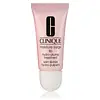What's inside
What's inside
 Key Ingredients
Key Ingredients

 Benefits
Benefits

 Concerns
Concerns

 Ingredients Side-by-side
Ingredients Side-by-side

Oleic/Linoleic/Linolenic Polyglycerides
EmollientBis-Diglyceryl Polyacyladipate-2
EmollientRicinus Communis Seed Oil
MaskingPolyhydroxystearic Acid
EmulsifyingCaprylic/Capric Triglyceride
MaskingButyrospermum Parkii Butter
Skin ConditioningPersea Gratissima Oil
Skin ConditioningEthylhexyl Palmitate
EmollientMica
Cosmetic ColorantOryza Sativa Bran Extract
Skin ConditioningSilica Dimethyl Silylate
EmollientCalcium Sodium Borosilicate
Oenothera Biennis Oil
EmollientVanillin
MaskingHelianthus Annuus Extract
EmollientCaprylyl Glycol
EmollientCitrus Aurantium Dulcis Peel Oil
MaskingEthylhexylglycerin
Skin ConditioningSilica
AbrasiveTribehenin
EmollientRosmarinus Officinalis Leaf Extract
AntimicrobialTocopherol
AntioxidantSorbitan Isostearate
EmulsifyingTrihydroxystearin
Skin ConditioningSodium Hyaluronate
HumectantPalmitoyl Tripeptide-1
Skin ConditioningGlucomannan
Skin ConditioningCitral
PerfumingLimonene
PerfumingLinalool
PerfumingCI 77891
Cosmetic ColorantCI 77491
Cosmetic ColorantTin Oxide
AbrasiveCI 45410
Cosmetic ColorantOleic/Linoleic/Linolenic Polyglycerides, Bis-Diglyceryl Polyacyladipate-2, Ricinus Communis Seed Oil, Polyhydroxystearic Acid, Caprylic/Capric Triglyceride, Butyrospermum Parkii Butter, Persea Gratissima Oil, Ethylhexyl Palmitate, Mica, Oryza Sativa Bran Extract, Silica Dimethyl Silylate, Calcium Sodium Borosilicate, Oenothera Biennis Oil, Vanillin, Helianthus Annuus Extract, Caprylyl Glycol, Citrus Aurantium Dulcis Peel Oil, Ethylhexylglycerin, Silica, Tribehenin, Rosmarinus Officinalis Leaf Extract, Tocopherol, Sorbitan Isostearate, Trihydroxystearin, Sodium Hyaluronate, Palmitoyl Tripeptide-1, Glucomannan, Citral, Limonene, Linalool, CI 77891, CI 77491, Tin Oxide, CI 45410
Petrolatum
EmollientPolybutene
Polyglyceryl-2 Triisostearate
EmulsifyingHydrogenated Polyisobutene
EmollientTocopheryl Acetate
AntioxidantPvp
Emulsion StabilisingSilica
AbrasiveHydrogenated Castor Oil
EmollientPPG-51/Smdi Copolymer
Caprylic/Capric/Myristic/Stearic Triglyceride
EmollientButyrospermum Parkii Butter
Skin ConditioningSea Whip Extract
Skin ConditioningCeramide Ng
Skin ConditioningCholesterol
EmollientAstrocaryum Murumuru Seed Butter
EmollientCaprylic/Capric Triglyceride
MaskingEthylene/Propylene/Styrene Copolymer
C12-16 Alcohols
EmollientTetrahexyldecyl Ascorbate
AntioxidantButylene/Ethylene/Styrene Copolymer
Caprylyl Glycol
EmollientPalmitic Acid
EmollientHydrogenated Lecithin
EmulsifyingPetrolatum, Polybutene, Polyglyceryl-2 Triisostearate, Hydrogenated Polyisobutene, Tocopheryl Acetate, Pvp, Silica, Hydrogenated Castor Oil, PPG-51/Smdi Copolymer, Caprylic/Capric/Myristic/Stearic Triglyceride, Butyrospermum Parkii Butter, Sea Whip Extract, Ceramide Ng, Cholesterol, Astrocaryum Murumuru Seed Butter, Caprylic/Capric Triglyceride, Ethylene/Propylene/Styrene Copolymer, C12-16 Alcohols, Tetrahexyldecyl Ascorbate, Butylene/Ethylene/Styrene Copolymer, Caprylyl Glycol, Palmitic Acid, Hydrogenated Lecithin
 Reviews
Reviews

Ingredients Explained
These ingredients are found in both products.
Ingredients higher up in an ingredient list are typically present in a larger amount.
This ingredient is also known as shea butter. It is an effective skin hydrator and emollient.
Emollients help soothe and soften your skin. It does this by creating a protective film on your skin. This barrier helps trap moisture and keeps your skin hydrated. Emollients may be effective at treating dry or itchy skin.
Shea butter is rich in antioxidants. Antioxidants help fight free-radicals, or molecules that may harm the body. It is also full of fatty acids including stearic acid and linoleic acid. These acids help replenish the skin and keep skin moisturized.
While Shea Butter has an SPF rating of about 3-4, it is not a sunscreen replacement.
Shea butter may not be fungal acne safe. We recommend speaking with a professional if you have any concerns.
Learn more about Butyrospermum Parkii ButterThis ingredient is an emollient, solvent, and texture enhancer. It is considered a skin-softener by helping the skin prevent moisture loss.
It helps thicken a product's formula and makes it easier to spread by dissolving clumping compounds.
Caprylic Triglyceride is made by combining glycerin with coconut oil, forming a clear liquid.
While there is an assumption Caprylic Triglyceride can clog pores due to it being derived from coconut oil, there is no research supporting this.
Learn more about Caprylic/Capric TriglycerideCaprylyl Glycol is a humectant and emollient, meaning it attracts and preserves moisture.
It is a common ingredient in many products, especially those designed to hydrate skin. The primary benefits are retaining moisture, skin softening, and promoting a healthy skin barrier.
Though Caprylyl Glycol is an alcohol derived from fatty acids, it is not the kind that can dry out skin.
This ingredient is also used as a preservative to extend the life of products. It has slight antimicrobial properties.
Learn more about Caprylyl GlycolSilica, also known as silicon dioxide, is a naturally occurring mineral. It is used as a fine, spherical, and porous powder in cosmetics.
Though it has exfoliant properties, the function of silica varies depending on the product.
The unique structure of silica enhances the spreadability and adds smoothness, making it a great texture enhancer.
It is also used as an active carrier, emulsifier, and mattifier due to its ability to absorb excess oil.
In some products, tiny microneedles called spicules are made from silica or hydrolyzed sponge. When you rub them in, they lightly polish away dead skin layers and enhance the penetration of active ingredients.
Learn more about Silica